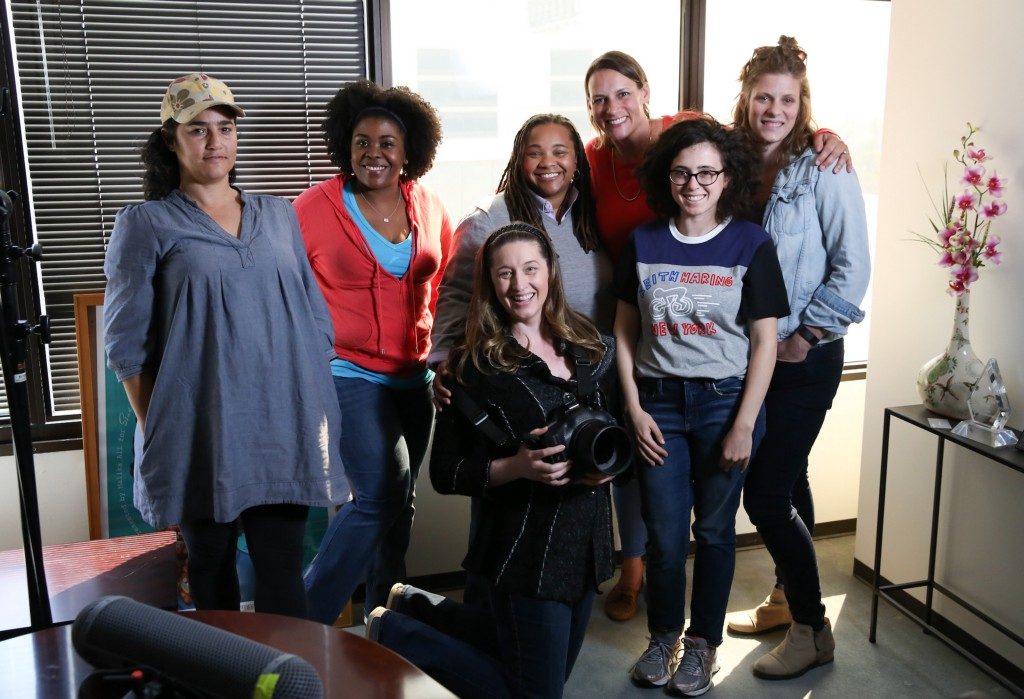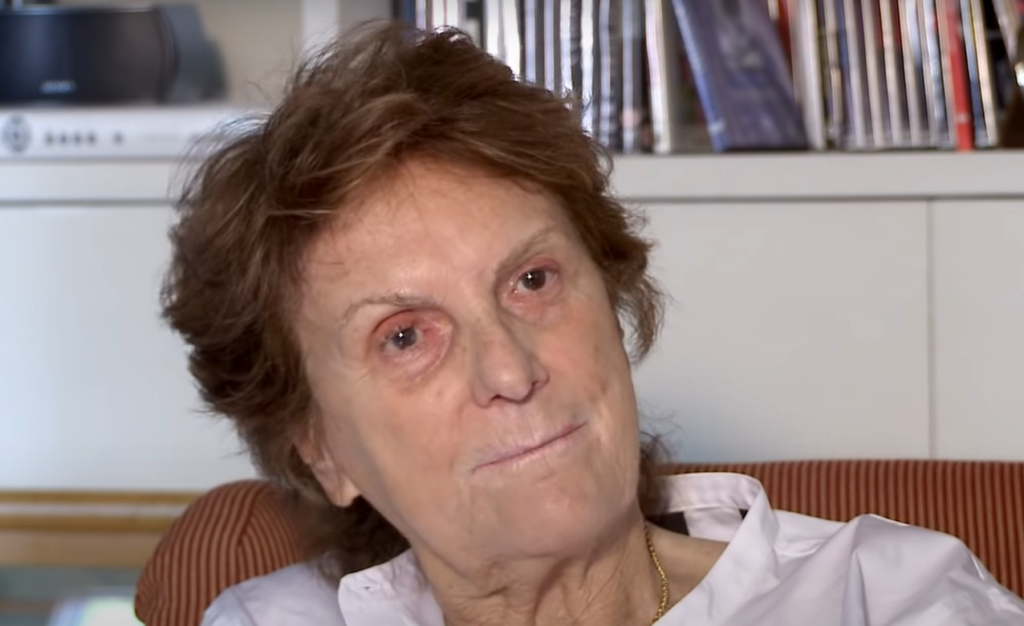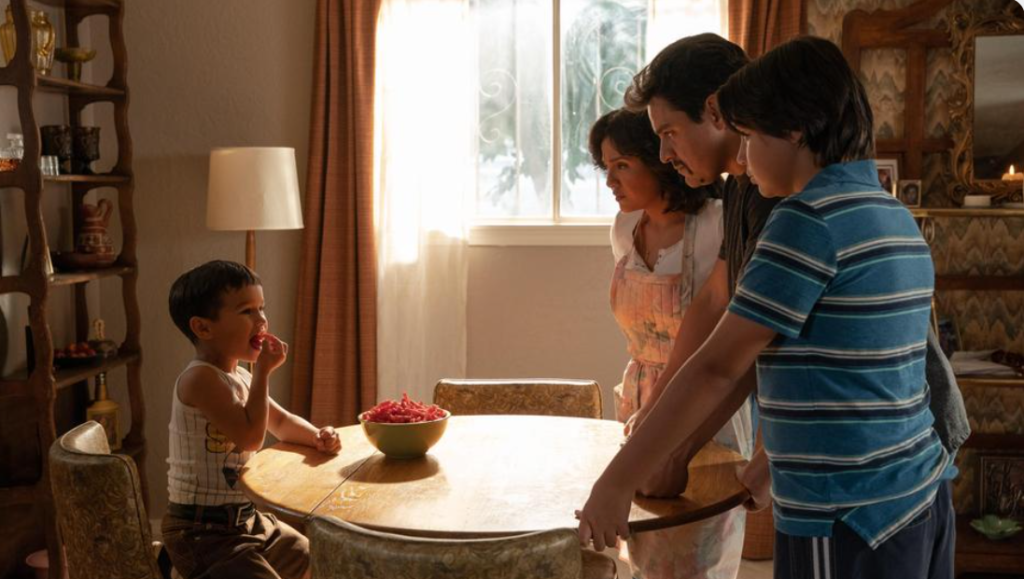Amy Adrion is a graduate of the MFA film directing program at the University of California, Los Angeles. Her prior credits include “Shoegazer,” “The Home of Split Pea Soup,” and “Sucks Less with Kevin Smith.”
“Half the Picture” will premiere at the 2018 Sundance Film Festival on January 23.
W&H: Describe the film for us in your own words.
AA: “Half the Picture” is a feature documentary about women film and television directors — including Ava DuVernay, Jill Soloway, Lena Dunham, and many more — candidly talking about their experiences in the business.
We also feature research and context from experts in the field including Women and Hollywood’s Founder and Publisher, the indefatigable Melissa Silverstein.
W&H: What drew you to this story?
AA: I graduated from film school and was having trouble getting my feature off the ground, as were many of my female colleagues. Right around that time I felt bombarded by the statistics, reports, and articles about the lack of working women directors and was feeling overwhelmed by how impossible it seemed for women to have careers as directors.
But at the same time, women were speaking up and sharing their stories, University of Southern California and San Diego State University continued to publish extensive research, and the ACLU and EEOC had begun investigating systemic discrimination of women in the field of directing. It seemed that change was possible. I had to document this dynamic time.
W&H: What do you want people to think about when they are leaving the theater?
AA: I want people of all ages, races, ethnicities, and sexual orientations to leave with an even greater passion to tell their own stories. I want them to get fired up by watching the incredible work made by the women in the film, who have all encountered discrimination, roadblocks, and rejections, yet found a way to power through and not just persevere, but make great cinema.
W&H: What was the biggest challenge in making the film?
AA: Time and money are the biggest challenges, especially when you’re not getting paid and the work takes years. Also, “Half the Picture” initially included clips with a number of prominent men including Matt Lauer, Charlie Rose, Jeffrey Tambor, Harvey Weinstein, and John Lasseter, who we had to cut out just weeks before Sundance because stories of their bad behavior came to light and they become a distraction to the story we were trying to tell.
W&H: How did you get your film funded? Share some insights into how you got the film made.
AA: We started this film by buying cameras on credit cards and relying on the generous contributions of talented crew members in order to get one interview after another under our belt. About 10 months after we started shooting we ran a crowdfunding campaign on Seed&Spark, and I will be forever grateful to the friends, family, and colleagues who generously supported us.
Once we had about 20 interviews shot, we were able to find an equity investor whose investment kicked our post production into gear. Without that money we would never have been able to hire our editor, Kate Hackett, full-time.
Post-production is another story. Our post budget eclipsed our production budget, and since we got into Sundance we didn’t have the luxury of time. So costs skyrocketed. Thankfully our initial investor increased their investment in the film to cover those costs, and we were thrilled to receive a Women In Film/ Stella Artois film finishing grant which was a lifesaver.
W&H: What does it mean for you to have your film play at Sundance?
AA: It’s not lost of me that many of the women in our film also got their start at Sundance, and I feel incredibly honored to be invited into this community of my filmmaking heroes.
W&H: What’s the best and worst advice you’ve received?
AA: I made a film about some of the greatest filmmakers working today, so I got tons of useful advice in our interviews. Kimberly Peirce said that your job as a director is to wake up with 100 problems every day and to learn to roll with that and find joy in the process even when it’s frustrating.
Jill Soloway reminded me — on a day when I had received yet another rejection for a grant we had applied for — that this system is not set up for women to succeed. It’s not built for that, so when you get a rejection or someone doesn’t respond to your work or doesn’t want to give you money, you can’t take it personally. Just keep going.
Worst advice? Who’s got time for that? Onward.
W&H: What advice do you have for other female directors?
AA: Focus on your work, which is hard when many of us are also fighting battles for recognition, opportunity, and justice, not just in entertainment but in many facets of our lives. But making art takes sustained effort and concentration. You really do need to prioritize yourself and your work if you’re ever going to get anything done, which is more than half the battle: finding time.
Work on what you love a little bit each day. Don’t be hard on yourself, and keep moving forward. And find your tribe. We’re out here.
W&H: Name your favorite woman-directed film and why.
AA: Impossible! Too many to name and with all the women directors in my film who I admire so deeply, I could never single out the work of just one.
But I will give a shout-out to a Canadian filmmaker who is not in our film whose work I love. Her name is Andrea Dorfman and her first feature was a gem called “Parsley Days,” a comedy about a young couple breaking up that has a rich visual style and ends with the boyfriend making a mix tape for his ex-girlfriend to listen to while she has an abortion. It’s heartbreaking, funny, and real.
W&H: Hollywood is in the midst of undergoing a major transformation. Many women and some men in the industry are speaking publicly about their experiences being assaulted and harassed. What do you think of the recently announced anti-sexual harassment Commission made up of industry leaders? Do you believe that it will help make systemic change? What do you think needs to be done to address this issue?
AA: I am so grateful to the women who bravely stood up and told their stories of harassment, abuse, and assault. How painful that must have been and how scary in an industry where your “image” is so important to your career. No one wants to be seen as a victim and no one wants to relive traumatic or humiliating experiences publicly — but they did it, and that chorus of women has shed a light on the very real struggles women still face.
I still hold out hope that Anita Hill will someday be a Supreme Court justice, but I’m grateful for her commitment to this Commission. They are sending a message that women will not be quiet any longer. All of us, in our own ways, are speaking up and demanding respect.







